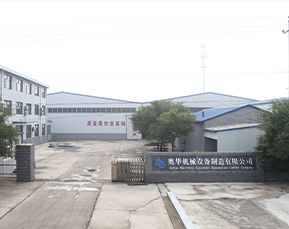 Afrikaans
Afrikaans  Albanian
Albanian  Amharic
Amharic  Arabic
Arabic  Armenian
Armenian  Azerbaijani
Azerbaijani  Basque
Basque  Belarusian
Belarusian  Bengali
Bengali  Bosnian
Bosnian  Bulgarian
Bulgarian  Catalan
Catalan  Cebuano
Cebuano  Corsican
Corsican  Croatian
Croatian  Czech
Czech  Danish
Danish  Dutch
Dutch  English
English  Esperanto
Esperanto  Estonian
Estonian  Finnish
Finnish  French
French  Frisian
Frisian  Galician
Galician  Georgian
Georgian  German
German  Greek
Greek  Gujarati
Gujarati  Haitian Creole
Haitian Creole  hausa
hausa  hawaiian
hawaiian  Hebrew
Hebrew  Hindi
Hindi  Miao
Miao  Hungarian
Hungarian  Icelandic
Icelandic  igbo
igbo  Indonesian
Indonesian  irish
irish  Italian
Italian  Japanese
Japanese  Javanese
Javanese  Kannada
Kannada  kazakh
kazakh  Khmer
Khmer  Rwandese
Rwandese  Korean
Korean  Kurdish
Kurdish  Kyrgyz
Kyrgyz  Lao
Lao  Latin
Latin  Latvian
Latvian  Lithuanian
Lithuanian  Luxembourgish
Luxembourgish  Macedonian
Macedonian  Malgashi
Malgashi  Malay
Malay  Malayalam
Malayalam  Maltese
Maltese  Maori
Maori  Marathi
Marathi  Mongolian
Mongolian  Myanmar
Myanmar  Nepali
Nepali  Norwegian
Norwegian  Norwegian
Norwegian  Occitan
Occitan  Pashto
Pashto  Persian
Persian  Polish
Polish  Portuguese
Portuguese  Punjabi
Punjabi  Romanian
Romanian  Russian
Russian  Samoan
Samoan  Scottish Gaelic
Scottish Gaelic  Serbian
Serbian  Sesotho
Sesotho  Shona
Shona  Sindhi
Sindhi  Sinhala
Sinhala  Slovak
Slovak  Slovenian
Slovenian  Somali
Somali  Spanish
Spanish  Sundanese
Sundanese  Swahili
Swahili  Swedish
Swedish  Tagalog
Tagalog  Tajik
Tajik  Tamil
Tamil  Tatar
Tatar  Telugu
Telugu  Thai
Thai  Turkish
Turkish  Turkmen
Turkmen  Ukrainian
Ukrainian  Urdu
Urdu  Uighur
Uighur  Uzbek
Uzbek  Vietnamese
Vietnamese  Welsh
Welsh  Bantu
Bantu  Yiddish
Yiddish  Yoruba
Yoruba  Zulu
Zulu Understanding the Mechanics of Conveyor Belt Drive Pulleys and Their Applications
Understanding Conveyor Belt Drive Pulleys An In-Depth Exploration
Conveyor belts have become an integral part of many industries, facilitating the movement of goods in a systematic and efficient manner. At the heart of these systems lies the conveyor belt drive pulley, a crucial component that ensures the smooth operation and reliability of the entire conveyor system. This article delves into the significance, types, and mechanics of conveyor belt drive pulleys, illustrating their vital role in material handling.
What is a Conveyor Belt Drive Pulley?
A conveyor belt drive pulley is essentially a cylindrical device that rotates to move the conveyor belt. It is typically located at one end of the conveyor system and is connected to a motor. As the motor spins the drive pulley, it creates motion that moves the attached conveyor belt, which in turn transports materials from one point to another. Drive pulleys are designed to withstand varying conditions, such as heavy loads, high speeds, and environmental factors, making them a critical element in the operation of conveyors.
Types of Drive Pulleys
There are several types of drive pulleys, each suited for specific applications
1. Drive Pulley This is the primary pulley responsible for driving the conveyor belt. It is powered by a motor, which provides the necessary torque for movement.
2. Idler Pulley Unlike the drive pulley, idler pulleys do not receive power from a motor. Instead, they provide support to the conveyor belt and help maintain its tension. Proper tension is crucial for preventing slippage and wear.
3. Wing Pulley This type of pulley features wings that help reduce material buildup on the pulley surface, minimizing maintenance issues and prolonging the life of the conveyor system.
4. Lagged Pulley Lagging refers to the process of adding a covering material to the pulley’s surface. This enhances grip and improves the friction between the pulley and the conveyor belt, preventing slippage, especially under heavy loads.
5. Shafted vs. Shaftless Pulley Shafted pulleys are mounted on a shaft, while shaftless pulleys utilize a different mechanic, often providing easier access and maintenance.
Mechanics of Drive Pulleys
conveyor belt drive pulley

The efficiency of a conveyor belt system is highly dependent on the design and mechanics of the drive pulleys. The main function of the drive pulley is to convert the rotational energy produced by the motor into linear motion. The interaction between the pulley and the belt is facilitated through friction. Several factors influence this interaction
- Surface Texture The surface condition of the pulley can affect grip
. A rough or lagged surface increases friction, thus improving the ability of the drive pulley to move the belt.- Belt Material The type and material of the conveyor belt itself also play a significant role. Different materials provide varying levels of friction and flexibility.
- Incline Factors When conveyors are on an incline, the drive pulley must exert extra force to overcome gravity. This requires careful consideration of the pulley design and motor power.
Applications of Drive Pulleys
Conveyor belt drive pulleys are used across a wide variety of industries, including
- Manufacturing In factories, drive pulleys play a vital role in assembly lines where goods need to be moved quickly and efficiently.
- Mining In mining operations, conveyor systems transport heavy materials, making the efficiency and durability of drive pulleys critical.
- Food Processing Hygiene is paramount in food processing, and drive pulleys must be designed to limit food contamination while providing reliable performance.
- Logistics Warehouses and distribution centers utilize conveyor belts to enhance sorting and shipping processes, facilitated by effective drive pulleys.
Conclusion
The conveyor belt drive pulley is more than just a mechanical component; it is a key player in the efficiency and effectiveness of conveyor systems. By understanding its types, mechanics, and applications, industries can optimize their material handling processes, leading to increased productivity and reduced operational costs. As technology advances, the design and performance of drive pulleys will continue to evolve, promising even greater efficiency in the future. The importance of this simple yet powerful component cannot be overstated, as it directly influences the success of countless operations in various sectors.
-
Revolutionizing Conveyor Reliability with Advanced Rubber Lagging PulleysNewsJul.22,2025
-
Powering Precision and Durability with Expert Manufacturers of Conveyor ComponentsNewsJul.22,2025
-
Optimizing Conveyor Systems with Advanced Conveyor AccessoriesNewsJul.22,2025
-
Maximize Conveyor Efficiency with Quality Conveyor Idler PulleysNewsJul.22,2025
-
Future-Proof Your Conveyor System with High-Performance Polyurethane RollerNewsJul.22,2025
-
Driving Efficiency Forward with Quality Idlers and RollersNewsJul.22,2025





























